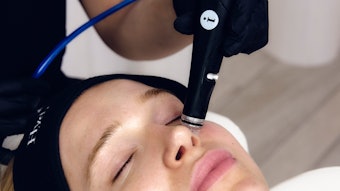A gel that could prevent painful and disfiguring contractions of skin grafts used to treat burns has been developed by British scientists, reports Royal Society of Chemistry. Researchers at the University of Scheffield have developed an enzyme-inhibiting drug that can reportedly halve the contraction caused by skin grafts.
When skin is badly burned, skin taken from other areas of the patient’s body or created by tissue engineering is grafted onto the burned area. Although grafts often heal successfully, the skin shrinks significantly in nearly a third of patients. The process is painful and disabling and particularly common in children.
Karima Bertal and fellow researchers at the university presented their preliminary findings at the Royal Society of Chemistry’s Biomaterials conference in Manchester, UK, earlier this month. The research team identified a compound, 3-aminopropionitrile, that inhibits the enzyme that causes graft contraction and combined it with a biocompatible polymer gel invented by chemist Steve Armes, also at Sheffield. According to the researchers the enzyme lysyl oxidase causes graft contraction, due to its ability to tie together collagen fibers in the deep dermal layer of the skin.
Currently pressure garments are used to treat graft contraction by pushing down on the dermis to prevent it from forming bumps of contracted tissue, but the researchers are hoping to change that.
The research team conducted tests, reporting that the drug reduced the contraction by nearly 20%. The team also reported that the polymer gel is well-tolerated by the skin and releases the drug in a controlled manner over approximately 48 hr.
The team has started testing the drug-gel combination on human skin samples and early results reportedly look promising.
-Royal Society of Chemistry










